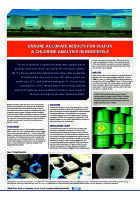Analytical Instrumentation
Ensure Accurate Results for Sulfur and Chlorine Analysis in Biodiesels
Nov 05 2020
Author: XOS on behalf of XOS
Typical biodiesels are known to have an oxygen concentration which is higher than that of traditional diesels. This high oxygen content (most commonly between 9 – 11 wt%) can cause XRF analyzers to report lower sulfur and chlorine concentrations due to absorption of the XRF signal by the oxygen. To account for high oxygen content of biodiesel and potential low bias results when measured on a non-oxygenated calibration, the simple use of a correction factor or matrix matching is recommended.
Download our whitepaper to learn more about the approaches to elemental analysis for biodiesel applications.
Digital Edition
PIN 25.3 June/July
June 2024
Analytical Instrumentation - Recent Advances In Various Bench Scale Accelerated Oxidative Testing Methods For Fuels - Petrochemical Industry: Anton Paar Solutions Streamline Processes, Reduce H...
View all digital editions
Events
Jul 30 2024 Jakarta, Indonesia
Jul 30 2024 Jakarta, Indonesia
China Energy Summit & Exhibition
Jul 31 2024 Beijing, China
Jul 31 2024 Chengdu, China
Aug 05 2024 Moon Township, PA, USA















